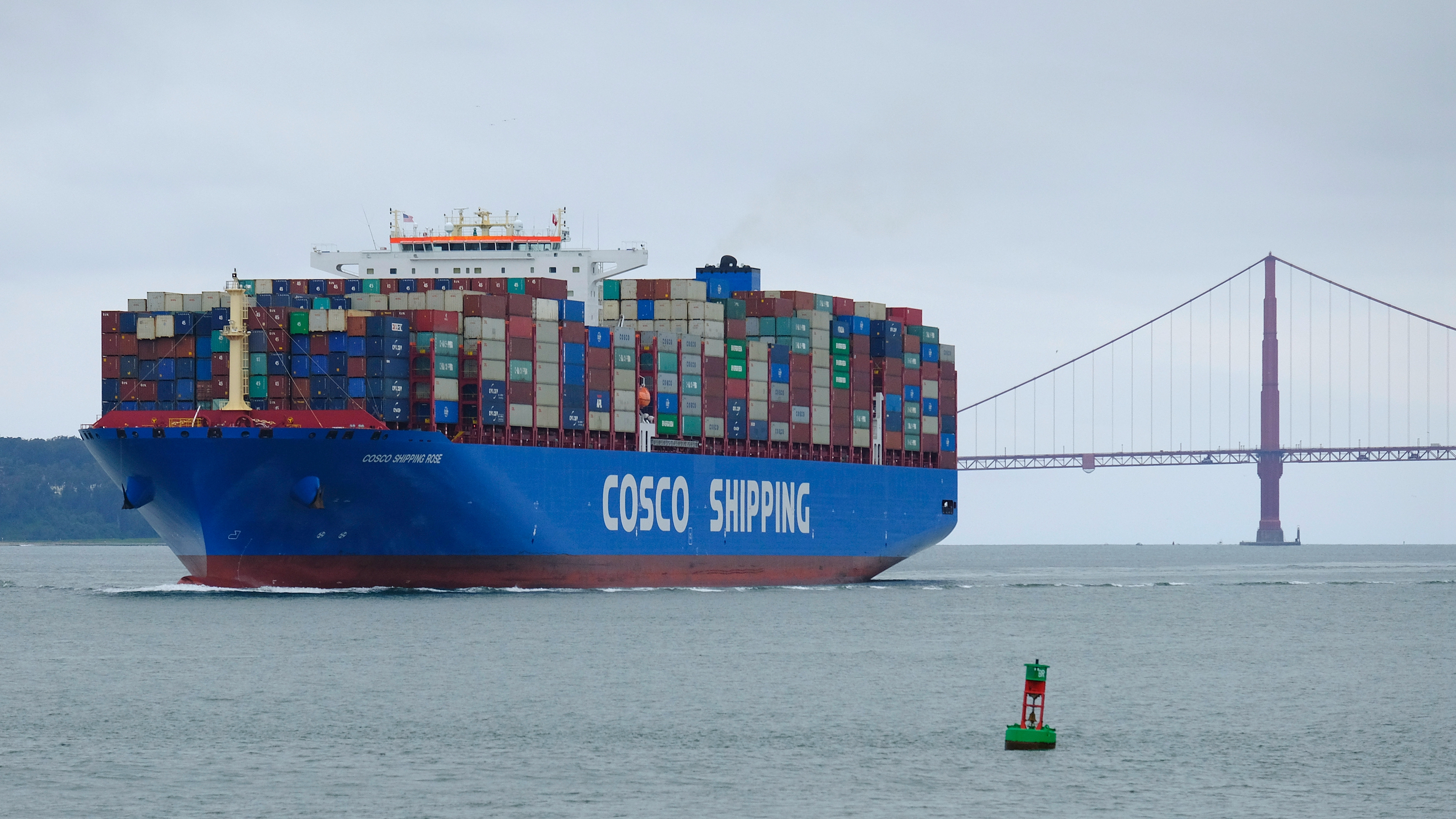
Port in Yingkou, northeast China's Liaoning Province. /AP
Port in Yingkou, northeast China's Liaoning Province. /AP
The impact of the coronavirus outbreak on the shipping industry "is continuing to increase in scope, and the ripple effects are continuing to show up," said Sea-Intelligence, an analysis company specialized in the sector, in its weekly report. The observation comes at a time when industries and commerce are starting to slowly get back to work across China.
According to the document accessed by CGTN Digital, in the 10-week-period, comprising of the Chinese New Year and the ongoing coronavirus outbreak, the industry is being faced with a downfall of some 1.7 million TEU (twenty-foot equivalent unit is the inexact unit of a container), roughly 1.7 billion U.S. dollars in revenues for the carriers.
Read more:
China's ports are full amid coronavirus; trucking capacity a challenge
For the Copenhagen-based company, this TEU loss represents one percent of the total global volume in 2019, meaning that the "coronavirus is thus far on track to reduce global container growth in 2020 by one percentage point."
"The hope is that the situation will be brought under control in the near future and that we will get a V-shaped recovery," the report said, noting that it is possible for the shipping companies to catch up on some of the 1.7 million TEU.
But even in this case, because many containers were exported out of China and there were so many blank sailings, it "will be a challenge for carriers to repatriate them quickly enough to meet a sudden post-virus surge out of China."
Andy Lane, an analyst at Sea-Intelligence, told CGTN Digital: "Without a large escalation of new infections, and as people get back to work, there should be noticeable improvements within a few weeks."
According to ship-technology.com, the number of port calls at Shanghai and Yangshang declined by 17 percent in January, compared to the same period in the previous year.
Danish shipping company Maersk Line is expected to face the biggest impact since China represents 30 percent of its annual shipping volume. Hapag Lloyd can also face a weak first quarter because China operations account for 25 percent of the group's total revenue.

Chinese company Cosco Shipping container ship. /AP
Chinese company Cosco Shipping container ship. /AP
Congestion hits Indian ports
Previously reported congestion in Chinese ports is also affecting other ports, since companies had to unload refrigerator (reefer) containers in other locations, increasing reefer plug utilization there, the report revealed.
The document said that Indian importers can't get the proper documents from the Chinese counterparts, so "the cargo is stuck at Indian ports, creating congestion problems," which means congestion is affecting several other ports in Asia.
To avoid factory shutdowns due to lack of components, some auto plants, like Jaguar Land Rover, opted to use air cargo trips.
Large capacity reduction
Since the Chinese New Year is the biggest holiday in China's calendar, shipping and logistics companies already expected a higher number of blank sailings (cancellations by the carrier), but those estimates were elevated due to the epidemic.
The largest capacity reduction was registered in Asia to North Europe lane, where 11 percent of the capacity was blanked since the Chinese New Year. When considering the holiday's blanks, 29.5 percent of the capacity was removed from the trade, in over 10 weeks.
In the Transpacific trade to the North American West Coast, 10 percent of the sailings were blanked due to the virus, bringing the total level of blanked capacity to 24.1 percent.
In the 10-week-period, during which the coronavirus has affected every sector in the industrial chain, the Transpacific trade to the West Coast now "equals 74 percent of the normal Chinese New Year removal." In the Asia-Mediterranean lane, the impact is 71 percent.